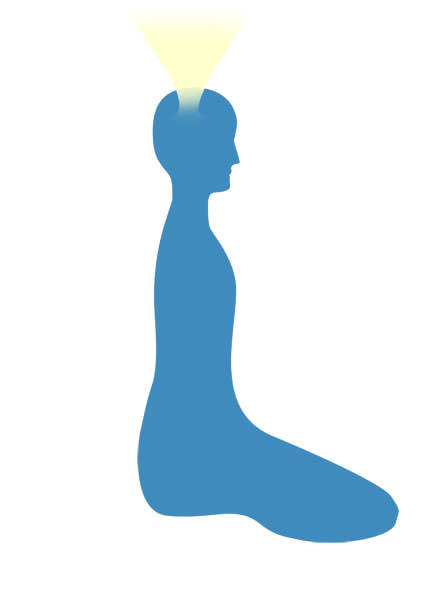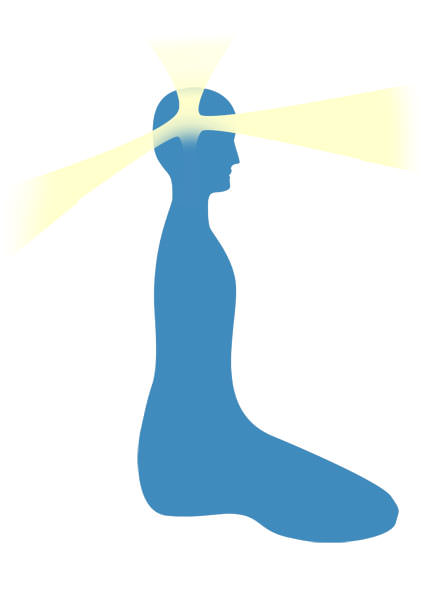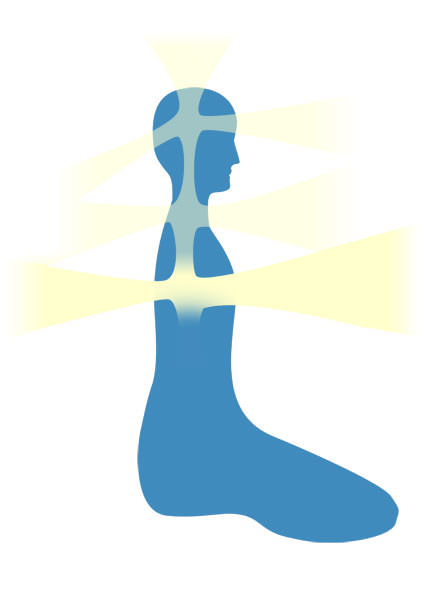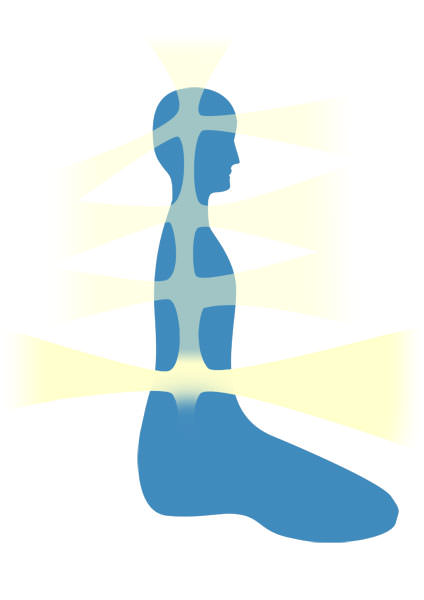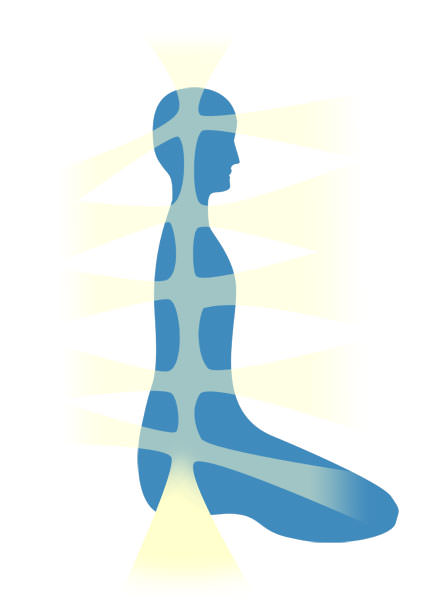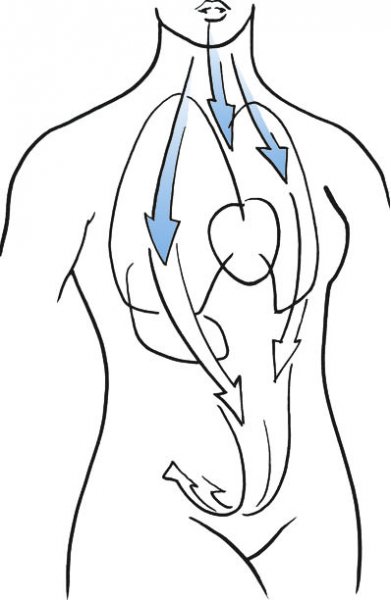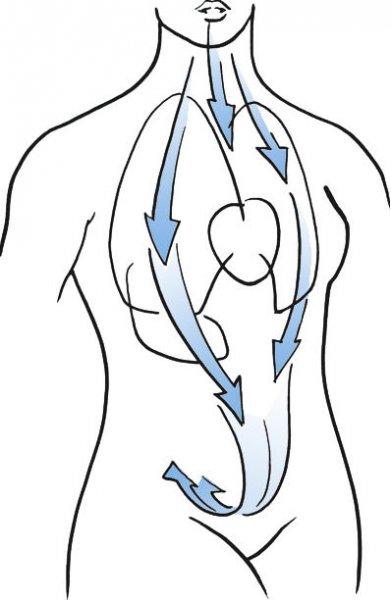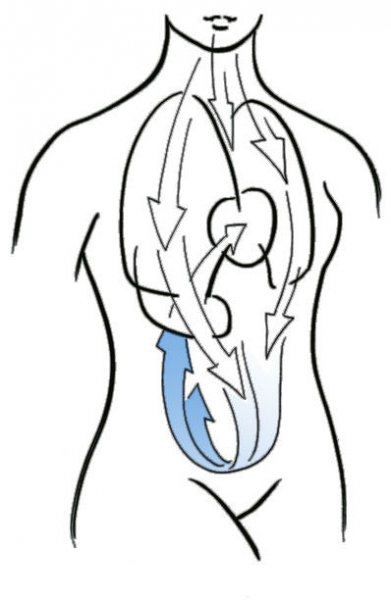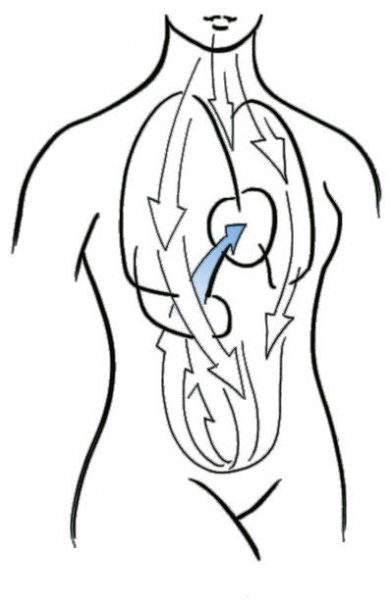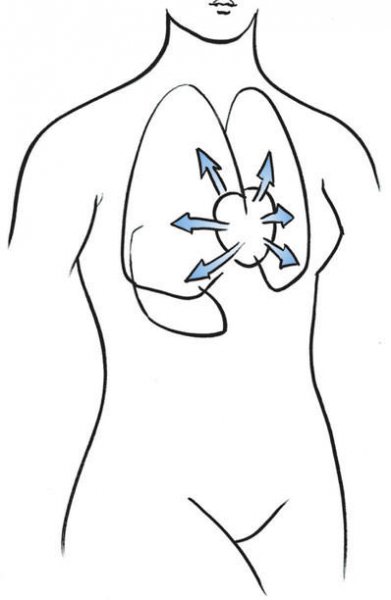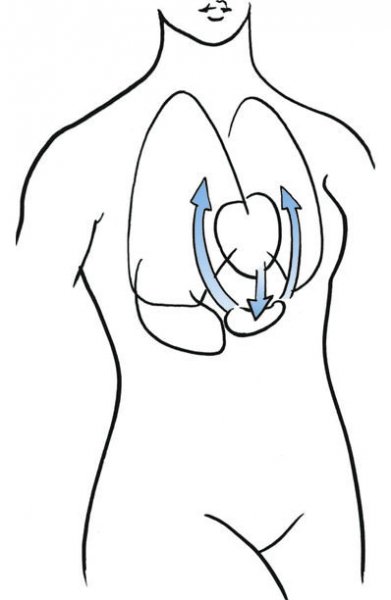Healing Meditation during Acupuncture Sessions
The meditation practice introduced here consists of three steps building on each other:
Deep conscious breathing
Breathing is the first and main source of our life force. We breathe in vital energy, the life force. Whenever we breathe in deeply and relax, our vital energy is activated. The word inspiration, from the Latin inspirare, to breathe in, is consistent with the idea that breathing is the gateway to our creativity and spirituality. We talk about feeling energetic and inspired. Conscious breathing is to be understood as a bridge between the soul and the physical body, thus helping to connect body and mind.
After the acupuncture needles have been inserted, awareness should be focused on the breath, so the patient is asked to observe their breathing. The first step is to inhale deeply for about five to ten minutes. Deep and continuous inhalations charge and strengthen the life force. The therapist may support the patient by saying:
‘Breathe deeper, breathe deeply into the chest’, or
‘Breathing deeply activates and strengthens your life force and gives you more energy’, or ‘Breathing deeply makes you feel more alive’.
The last two affirmations help the patient to develop a stronger motivation.
Then the patient turns his attention to breathing out. Here, the emphasis lies in a prolonged and complete exhalation, relaxing more and more with each outbreath. The therapist may say:
‘Breathe out slowly and deeply’, or
‘Take more time to exhale’, or
‘Let your tension go with the exhalation’, or
‘Each breath helps you to relax more and more’.
Conscious and prolonged exhalation helps the body to relax and release tension, thus harmonizing the life force and allowing for more flow of qi. Health is characterized by a free-flowing qi and pulsing of the breath and vital energy within the body's organs, channels, and energy centers. Focusing the awareness on the breath is an essential way to enhance the healing effect of acupuncture.
Awareness of the body
Once the breathing technique has been established – usually during the first acupuncture session – and the patient feels comfortable with it, the therapist introduces the patient to increased body awareness. The patient is asked to close his eyes, feel inside the body and to become aware of bodily sensations and emotions while consciously watching the breath at the same time.
In the course of treatment, the therapist encourages the patient to go deeper and deeper into the body, while mirroring the process by doing the same and directing his awareness inside his own body. This approach helps the patient to focus his awareness and feel increasingly relaxed. He may also experience slight tingling sensations and a gentle flow of energy.
Qigong
Qigong is one of the modalities of Chinese medicine, its practice being to harmonize and energize the life force. It is a way of cultivating qi, working with and become aware of qi by using the breath and certain positions of the hands, gently and slowly. The breath and the hand positions help to focus awareness and direct the flow of the life force.
During the acupuncture session, the patient holds his arms in a circle in front of the different regions of the body, the hands facing the body as usual in qigong, beginning with the chest area and then moving the hands downward to the abdomen, and later further down to the region of the pelvis. The distance at which the hands should be held from the body can slowly be expanded. However, the ideal distance comes about naturally and is determined by the patient himself.
The hand positions together with breathing technique help the patient to direct awareness to particular areas and hold it there, consciously perceiving the flow of energy inside the body. Blockages are loosened and will eventually dissolve. A deep relaxation is felt after a few sessions.

